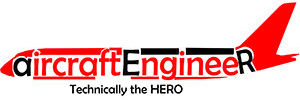Module 7 – Maintenance Practices
7.1 Safety Precautions – Aircraft and Workshop
Aspects of safe working practices including precautions to take when working with electricity, gases especially oxygen, oils and chemicals.
Also, instruction in the remedial action to be taken in the event of a fire or another accident with one or more of these hazards.
7.2 Workshop Practices
Care of tools, control of tools, use of workshop materials;
Dimensions, allowances and tolerances, standards of workmanship;
Calibration of tools and equipment, calibration standards.
7.3 Tools
Common hand tool types;
Common power tool types;
Operation and use of precision measuring tools;
Lubrication equipment and methods;
Operation, function and use of electrical general test equipment.
7.4 Avionic General Test Equipment
Operation, function and use of avionic general test equipment.
7.5 Engineering Drawings, Diagrams and Standards
Drawing types and diagrams, their symbols, dimensions, tolerances and projections;
Identifying title block information;
Microfilm, microfiche and computerised presentations;
Specification 100 of the Air Transport Association (ATA) of America;
Aeronautical and other applicable standards including ISO, AN, MS, NAS and MIL;
Wiring diagrams and schematic diagrams.
7.6 Fits and Clearances
Drill sizes for bolt holes, classes of fits;
Common system of fits and clearances;
Schedule of fits and clearances for aircraft and engines;
Limits for bow, twist and wear;
Standard methods for checking shafts, bearings and other parts.
7.7 Electrical Cables and Connectors
Continuity, insulation and bonding techniques and testing;
Use of crimp tools: hand and hydraulic operated;
Testing of crimp joints;
Connector pin removal and insertion;
Co-axial cables: testing and installation precautions;
Wiring protection techniques : Cable looming and loom support, cable clamps, protective sleeving techniques including heat shrink wrapping, shielding.
7.8 Riveting
Riveted joints, rivet spacing and pitch;
Tools used for riveting and dimpling;
Inspection of riveted joints.
7.9 Pipes and Hoses
Bending and belling/flaring aircraft pipes;
Inspection and testing of aircraft pipes and hoses;
Installation and clamping of pipes.
7.10 Springs
Inspection and testing of springs.
7.11 Bearings
Testing, cleaning and inspection of bearings;
Lubrication requirements of bearings;
Defects in bearings and their causes.
7.12 Transmissions
Inspection of gears, backlash;
Inspection of belts and pulleys, chains and sprockets;
Inspection of screw jacks, lever devices, push-pull rod systems.
7.13 Control Cables
Swaging of end fittings;
Inspection and testing of control cables;
Bowden cables; aircraft flexible control systems.
7.14 Material Handling
7.14.1 Sheet Metal Work
Marking out and calculation of bend allowance;
Sheet metal working, including bending and forming;
Inspection of sheet metal work.
7.14.2 Composite and non-metallic
Bonding practices;
Environmental conditions;
Inspection methods.
7.15 Welding, Brazing, Soldering and Bonding
(a) Soldering methods; inspection of soldered joints.
(b) Welding and brazing methods;
Inspection of welded and brazed joints;
Bonding methods and inspection of bonded joints.
7.16 Aircraft Weight and Balance
(a) Centre of Gravity / Balance limits calculation: use of relevant documents.
(b) Preparation of aircraft for weighing;
Aircraft weighing.
7.17 Aircraft Handling and Storage
Aircraft towing and associated safety precautions;
Aircraft jacking, chocking, securing and associated safety precautions;
Aircraft storage methods;
Refuelling / defuelling procedures;
De-icing/anti-icing procedures;
Electrical, hydraulic and pneumatic ground supplies;
Effects of environmental conditions on aircraft handling and operation.
7.18 Disassembly, Inspection, Repair and Assembly Techniques
(a) Types of defects and visual inspection techniques;
Corrosion removal, assessment and reprotection.
(b) General repair methods, Structural Repair Manual;
Ageing, fatigue and corrosion control programmes.
(c) Non destructive inspection techniques including, penetrant, radiographic, eddy current, ultrasonic and boroscope methods.
(d) Disassembly and re-assembly techniques.
(e) Troubleshooting techniques.
7.19 Abnormal Events
(a) Inspections following lightning strikes and HIRF penetration.
(b) Inspections following abnormal events such as heavy landings and
flight through turbulence.
7.20 Maintenance Procedures
Maintenance planning;
Modification procedures;
Stores procedures;
Certification/release procedures;
Interface with aircraft operation;
Maintenance Inspection/Quality Control/Quality Assurance;
Additional maintenance procedures;
Control of life limited components.
EASA part 66 module 7 is about studying day to day aircraft maintenance work. The syllabus to set to prepare the student for a real maintenance environment as a mechanic. There fore the question are more on practicals aspects of aircraft maintenance. All Essay Questions are related to practical there fore its very important to visualize an working environment when studying this module.
Module 7 questions can be straight forward or lil tricky. though the essays are very straight forward. most of the maintenance practices syllabus is set to level 3,so its very important to have level 3 knowledge.
But its important to remember the right mathematical methods of vernier instruments and torque calculation. These questions are considered easy and at least two questions will be present from that. Questionnaire most probably contains multi choice questions (MCQ).
For CAT A there are 72 multi-choice and 2 essay questions, 90 minutes plus 40 minutes. CAT B1 80 multi-choice and 2 essay questions, 100 minutes plus 40 minutes.CAT B2 60 multi-choice and 2 essay questions, 75 minutes plus 40 minutes.
EASA Part 66 Module 7 questions.
